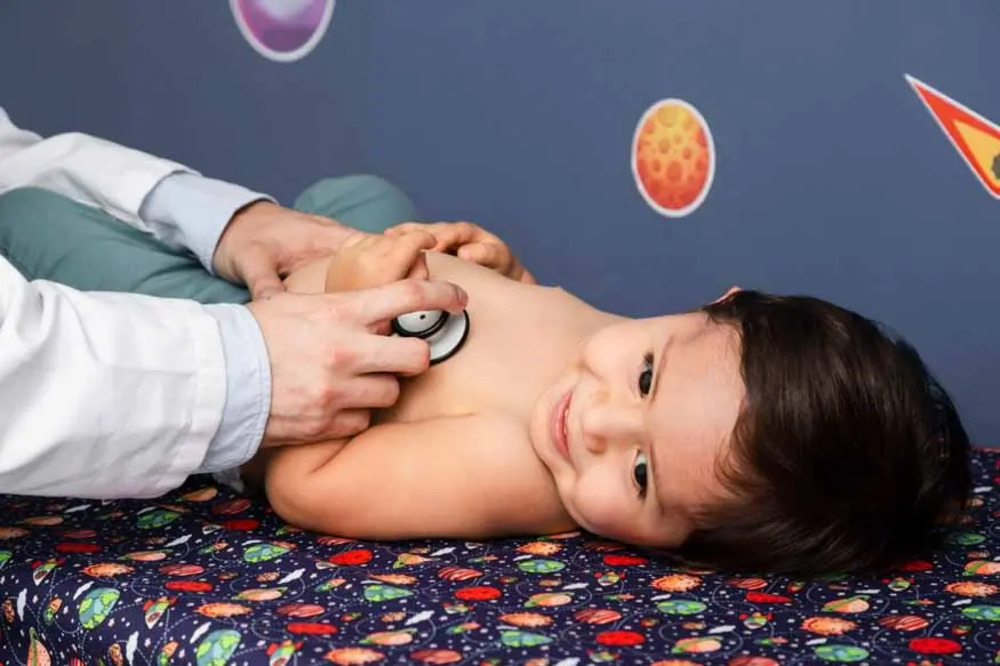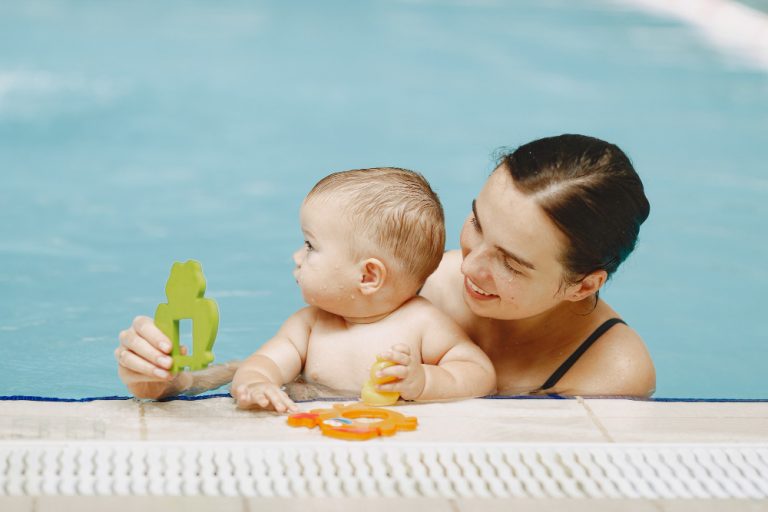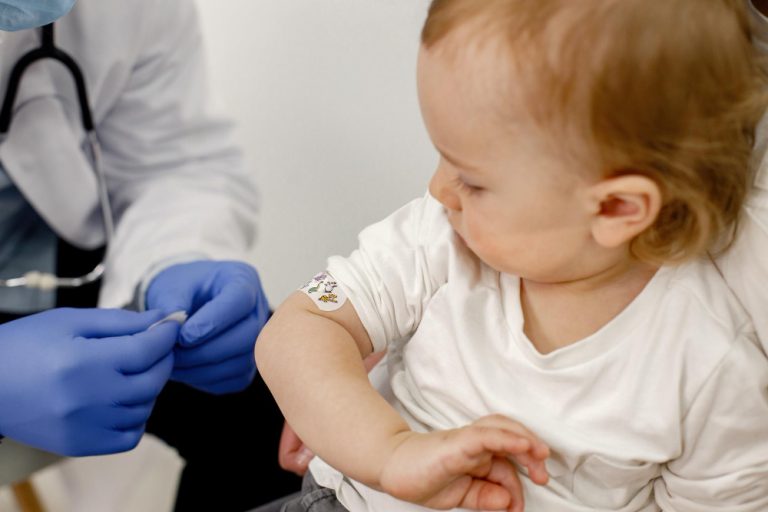How to Prevent SIDS (Sudden Infant Death Syndrome) in Babies
Are you constantly worrying about your little one’s safety during sleep? Have you found yourself anxious about the risk of Sudden Infant Death Syndrome (SIDS)? Do you know certain strategies on how to prevent SIDS? Have you ever wondered if there are specific measures you can take to reduce the risk of SIDS and ensure a safer sleep environment for your precious bundle of joy?
In this blog, we delve into effective strategies backed by expert advice on how to prevent SIDS and provide you with the peace of mind you deserve. Here’s a sneak peek at what we’ll cover:
- Understanding the causes and risk factors associated with SIDS
- Creating a safe sleep environment for your infant
- Key differences between SIDS and Sudden Unexpected Infant Death (SUID)
Stay tuned to explore practical tips, crucial information, and guidelines for protecting your baby and minimizing the chances of SIDS. Your baby’s safety is paramount, and we’re here to help you prevent SIDS in babies.
Introduction to SIDS Prevention

Sudden Infant Death Syndrome (SIDS) is a devastating and tragic event that claims the lives of thousands of infants each year. It refers to the unexplained death of an infant, usually during sleep, that remains without a definitive cause, even after a thorough investigation.
While the exact cause of SIDS is still unknown, researchers and healthcare professionals have identified several risk factors and prevention strategies that can significantly reduce the occurrence of SIDS.
Preventing SIDS is essential to ensuring the safety and well-being of infants. By implementing the appropriate prevention strategies, parents can minimize the risk of SIDS and create a safe sleep environment for their babies.
It is essential for parents and caregivers to be educated about how to prevent SIDS strategies and take proactive steps to protect their little ones.
While SIDS prevention cannot guarantee complete elimination of the risk, it can greatly decrease the chances of SIDS occurrence. Parents can take significant strides in safeguarding their baby’s sleep environment by adhering to safe sleep practices.
In the upcoming sections of this article, we will explore various prevention strategies, provide practical tips, and discuss vital information related to SIDS and its prevention. Let’s delve deeper into understanding the measures that can be taken to reduce the risk of this heartbreaking event.
10 Effective Strategies to Help Prevent SIDS

Reducing the risk of Sudden Infant Death Syndrome (SIDS) is a top concern for parents. By following these 10 key strategies, you can create a safe sleep environment for your baby and minimize the chances of SIDS:
1. Back to Sleep
Always place your baby on their back to sleep. This position has been shown to lower the risk of SIDS significantly.
2. Create a Firm Sleep Surface
Ensure your baby sleeps on a firm mattress with a fitted sheet. Avoid using soft bedding, such as pillows, comforters, or bumper pads, which can pose suffocation hazards.
3. Avoid Smoking
Keep your baby’s sleep environment free from cigarette smoke. Exposure to smoke increases the risk of SIDS, so make your home a smoke-free zone.
4. Breastfeed if Possible
Breastfeeding has been linked to a reduced risk of SIDS. If you can breastfeed, try to do so for as long as you and your baby are comfortable.
5. Immunize Your Baby
Follow the recommended immunization schedule for your baby. Vaccinations help protect your child from various diseases, reducing the risk of SIDS.
6. Share Your Room, Not Your Bed
While it’s recommended to share your room with your baby, it’s essential to provide a separate sleep area, such as a crib or bassinet. Sharing a bed with your baby increases the risk of suffocation or overheating.
7. Maintain a Safe Sleep Temperature
Keep your baby’s sleep area at a comfortable and safe temperature. Avoid overheating by dressing your baby in lightweight clothing and avoiding heavy blankets or sleep sacks.
8. Keep the Head and Face Uncovered
Ensure your baby’s head remains uncovered during sleep. Use a sleeper or onesie instead of a hat to keep them warm.
9. Offer a Pacifier at Sleep Time
Offering a pacifier at naptime and bedtime has been associated with a lower risk of SIDS. However, if your baby doesn’t want to use one, don’t force it.
10. Seek Regular Check-ups and Guidance
Consult with your healthcare provider regularly for well-baby check-ups and follow their guidance on safe sleep practices, immunizations, and overall infant care.
By implementing these preventative measures, you can significantly reduce the risk of SIDS and create a safe sleep environment for your precious little one. Remember, every step you take is a step towards ensuring your baby’s well-being and safety.
Source:
American Academy of Pediatrics, “Safe Sleep: Recommendations”.
Understanding SIDS and SUID

Sudden Infant Death Syndrome (SIDS) and Sudden Unexpected Infant Death (SUID) are both terms used to describe the tragic and unexplained death of an infant under the age of one year old.
While the exact cause of SIDS remains unknown, SUID is a broader category that includes all unexpected and unexplained infant deaths, including those caused by accidents, suffocation, or other factors.
Contrary to common misconceptions, SIDS is not caused by vaccines, choking, or trauma. It is important to understand that SIDS is a diagnosis of exclusion, meaning it can only be attributed when all other possible causes have been ruled out.
There are, however, known risk factors associated with SIDS. These risk factors can increase a baby’s chances of experiencing this tragedy. The most important factor is the sleep environment.
It is crucial to place babies on their backs to sleep on a firm mattress with a fitted sheet. Soft bedding, such as pillows, blankets, and sleep positioners, should also be avoided, as they can pose a suffocation risk.
Other risk factors for SIDS include maternal smoking during pregnancy, exposure to cigarette smoke after birth, premature birth or low birth weight, overheating during sleep, and certain sleep scenarios, such as bed-sharing or placing the baby to sleep on a soft surface.
To reduce the risk of SIDS and provide a safe sleep environment for infants, it is crucial for parents and caregivers to be aware of these risk factors and take appropriate measures to mitigate them.
Following safe sleep recommendations, such as ensuring a firm sleep surface, maintaining a comfortable room temperature, and keeping the baby’s sleep space free from hazards, can significantly reduce the risk of SIDS.
By understanding the differences between SIDS and SUID and being aware of the known risk factors, parents can take proactive steps to protect their infants and provide a safe sleep environment.
It is always advisable to consult with a healthcare provider for personalized guidance and recommendations based on the baby’s individual needs and medical history.
Creating a Safe Sleep Environment

Creating a safe sleep environment is essential for reducing the risk of SIDS and ensuring the well-being of your baby during sleep. Follow these important guidelines to promote safe sleeping habits:
Use a Firm Mattress
- It’s crucial to provide a firm mattress for your baby’s crib.
- Avoid soft surfaces, such as pillows or cushioned mattresses, as they can increase the risk of suffocation.
Avoid Soft Toys or Bedding
- Keep the sleep area free from soft toys, loose blankets, and pillows.
- These items can pose a suffocation hazard.
- Instead, dress your baby in a sleep sack or wearable blanket for warmth.
Maintain a Safe Sleep Temperature:
- Babies are more susceptible to overheating, which has been linked to an increased risk of SIDS.
- Keep the room temperature between 68-72 degrees Fahrenheit (20-22 degrees Celsius).
- Dress your baby appropriately for the ambient temperature.
Ensure Unobstructed Breathing
- Make sure your baby’s head and face remain uncovered during sleep.
- Avoid using crib bumpers, which can obstruct airflow and increase the risk of SIDS.
By following these guidelines, you can create a safe sleep environment that promotes healthy sleep and reduces the risk of SIDS for your little one. Remember, every sleep counts, and prioritizing safe sleep practices is crucial for your baby’s well-being.
Importance of Healthcare Provider Guidance

Consulting with a healthcare provider is essential in reducing the risk of SIDS and ensuring a safe sleep environment for infants.
Healthcare providers play a vital role in offering guidance and recommendations that are tailored to each baby’s specific needs. They can provide expert advice on safe sleep practices, such as placing the baby on their back to sleep, using a firm mattress, and avoiding soft toys or bedding.
By seeking the guidance of healthcare professionals, parents can access the most up-to-date information and evidence-based strategies to minimize the risk of SIDS. Remember, a partnership with your healthcare provider is crucial for the well-being of your baby.
SIDS Prevention and Related Guidelines

Preventing Sudden Infant Death Syndrome (SIDS) is of paramount importance for the safety and well-being of infants.
Adhering to guidelines provided by reputable organizations such as the American Academy of Pediatrics and the Lullaby Trust can significantly reduce the risk of SIDS. These guidelines are backed by extensive research and expert recommendations.
Here are 7 key recommendations to follow for SIDS prevention:
1. Back-to-Sleep Position
- Always place your baby on their back to sleep.
- This position reduces the risk of airway obstruction and overheating.
2. Use a Firm Sleep Surface
- Ensure your baby sleeps on a firm mattress that fits snugly into the crib.
- Avoid using soft bedding, stuffed toys, and pillows, as they can pose suffocation hazards.
3. Keep the Environment Smoke-Free
- Exposure to cigarette smoke increases the risk of SIDS.
- Never smoke around your baby, and create a smoke-free environment.
4. Maintain Optimal Sleep Temperature
- Babies are comfortable in a room that is not too hot or too cold.
- Maintain a temperature between 68°F to 72°F (20°C to 22°C) and avoid overdressing your baby during sleep.
5. Avoid Overheating
- Dress your baby in clothes suitable for room temperature.
- Use lightweight blankets and consider using a sleep sack instead of loose blankets.
6. Breastfeed your Baby
- Breastfeeding has been associated with a reduced risk of SIDS.
- Aim to breastfeed exclusively for the first six months, if possible.
7. Immunize your Baby
- Follow the recommended vaccination schedule provided by your healthcare provider.
- Immunizations can help protect your baby against various infections that may increase the risk of SIDS.
Implementing these guidelines can create a safe sleep environment and reduce the chances of SIDS. Always consult with your healthcare provider for personalized advice and guidance on SIDS prevention. Remember, these recommendations are vital for ensuring the well-being and safety of your precious little one.
Understanding SIDS Statistics and Risk Factors

Sudden Infant Death Syndrome (SIDS) is a devastating condition that affects infants during their sleep, leading to unexplained death. Understanding the statistics and risk factors associated with SIDS is crucial for parents and caregivers in ensuring the safety of their babies.
Statistics on SIDS
- According to data from the United States, SIDS is the leading cause of death in infants between one month and one year old.
- While the exact cause of SIDS remains unknown, certain risk factors have been identified based on research and analysis.
Sleep-related deaths and low birth weight
- It has been observed that infants with a low birth weight have an increased risk of SIDS.
- Additionally, sleep-related deaths, including SIDS, occur more frequently in infants with certain medical conditions or complications.
Increased risk in certain situations
- Certain situations and circumstances can increase the risk of SIDS.
- These include sharing a bed with an adult who smokes or consumes alcohol, placing the baby in a smoky room, starting to sleep in a car seat, or sleeping in an unsafe environment.
Reducing the risk of SIDS
While it may not be possible to eliminate all the risk factors associated with SIDS, there are steps parents can take to reduce the risk. These include:
- Placing the baby on their back to sleep
- Using a firm mattress and a fitted sheet in the crib
- Avoiding excessive bedding and soft toys in the sleeping area
- Maintaining a safe sleep temperature, around 68-72°F (20-22°C)
- Keeping the baby’s head and face uncovered during sleep
- Following safe sleep recommendations provided by healthcare professionals
It is essential to note that every baby is unique, and consulting with a healthcare provider is crucial in addressing individual needs and concerns.
Understanding the statistics and risk factors associated with SIDS is essential for parents and caregivers. By following safe sleep practices and seeking guidance from healthcare providers, we can work towards reducing the risk of SIDS and creating a safe sleep environment for our precious little ones.
Importance of Regular Check-ups and Immunizations

Regular check-ups and immunizations play a vital role in reducing the risk of SIDS (sudden infant death syndrome). It is essential for parents to follow their healthcare provider’s advice and schedule these important appointments.
Check-ups allow healthcare professionals to monitor the baby’s growth and development, detect any potential health issues, and provide necessary guidance on creating a safe sleep environment.
Immunizations help protect infants from various diseases, including respiratory infections that can increase the risk of SIDS. By adhering to regular check-ups and ensuring the baby is up to date with immunizations, parents can significantly reduce the chances of SIDS and contribute to their baby’s overall well-being.
The Final Note: How to Prevent SIDS
To summarize, preventing Sudden Infant Death Syndrome (SIDS) is crucial for the safety and well-being of infants. By implementing the following strategies and guidelines, parents can significantly reduce the risk of SIDS and create a safe sleep environment for their babies.
- Always place your baby on their back to sleep, as this position has been shown to reduce the risk of SIDS.
- Use a firm mattress and avoid soft bedding or toys in the crib, as these can pose suffocation hazards.
- Maintain a safe sleep temperature in the room, ensuring it is neither too hot nor too cold for your baby.
- Avoid smoking around your baby and keep their sleep environment free from secondhand smoke.
- Breastfeed your baby, as it has been associated with a lower risk of SIDS.
Make sure your baby is immunized according to the recommended schedule, as vaccines can help protect against infections that may increase the risk of SIDS.
It is essential to consult with a healthcare provider for guidance on SIDS prevention and to follow safe sleep recommendations. Organizations such as the American Academy of Pediatrics and the Lullaby Trust provide valuable guidelines for parents to follow.
By understanding the statistics, risk factors, common concerns surrounding SIDS, and how to prevent SIDS strategies, parents can make informed decisions and take necessary precautions. Regular check-ups and immunizations also play a significant role in reducing the risk of SIDS.
In conclusion, prioritizing SIDS prevention strategies and creating a safe sleep environment for infants is essential for their well-being. By following these how to prevent SIDS guidelines and seeking professional advice, parents can significantly decrease the risk of SIDS and ensure the safety of their precious little ones.
FAQs: How to Prevent SIDS
When it comes to sudden infant death syndrome (SIDS), parents often have concerns and questions regarding its exact cause and how to create a safe sleep environment for their babies. Let’s address some of the common inquiries and provide evidence-based answers and advice.







